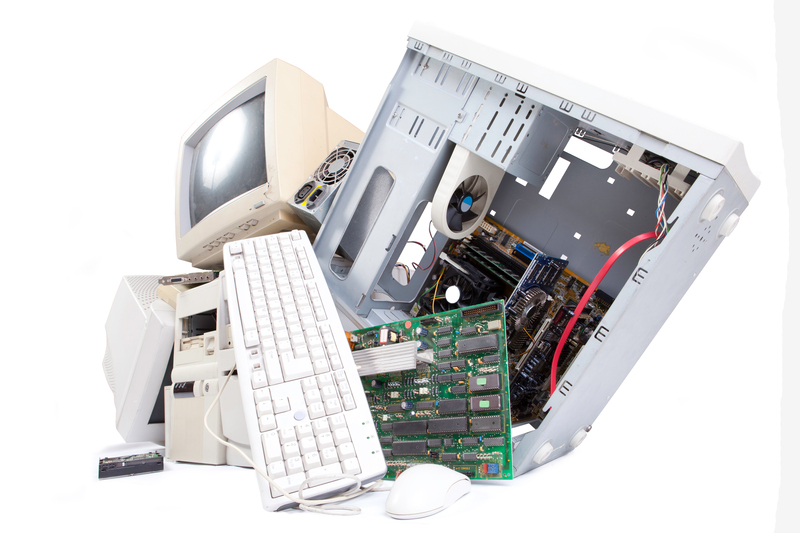The Environmental Impact of Disposing of Pots and Pans
Have you ever wondered what happens to your old pots and pans once you discard them? The environmental impact of disposing of cookware goes far beyond the garbage can. As sustainability becomes a pressing global concern, it is crucial to understand the consequences of improper disposal and discover eco-friendly alternatives for managing old kitchenware. In this detailed guide, we'll explore the lifecycle, materials, challenges, and solutions related to the environmental impact of disposing of pots and pans.

Why Disposing of Pots and Pans Is an Environmental Issue
The disposal of old cookware, such as pots and pans, raises several environmental concerns. These items are made from a variety of materials--including stainless steel, aluminum, copper, cast iron, ceramic, and nonstick coatings--which do not decompose easily. Improper disposal of pots and pans leads to increased landfill waste, resource wastage, and even chemical leaching into our soil and water systems.
Main Environmental Concerns
- Landfill Overcrowding: Non-biodegradable materials from discarded cookware take up space in already limited landfills.
- Resource Depletion: Manufacturing new pots and pans requires mining and processing raw materials, consuming large amounts of energy and water.
- Chemical Pollution: Nonstick coatings and metal compounds can leach toxic substances into the environment when improperly managed.
Understanding Cookware Materials and Their Environmental Impact
Not all pots and pans have the same environmental consequences. The materials they are made of significantly influence their end-of-life impact. Let's break down the most common cookware materials and how they affect the environment during disposal:
1. Stainless Steel
Stainless steel is popular due to its durability and resistance to rust. However, the production process involves energy-intensive mining of iron, chromium, and nickel. When thrown away, stainless steel does not break down, but it is highly recyclable. The problem arises when this cookware ends up in landfills rather than in recycling facilities, resulting in wasted resources and increased energy consumption for new production.
2. Aluminum
Aluminum cookware is lightweight and conducts heat well. On the downside, the extraction of aluminum ore (bauxite) is environmentally damaging and energy-consuming. Like stainless steel, aluminum pots and pans can be recycled, but if disposed of improperly, they contribute to landfill bulk and resource inefficiency.
3. Cast Iron
Cast iron is extremely durable and can last for generations with proper care. However, when cast iron pots and pans are disposed of irresponsibly, they contribute to unnecessary waste. While cast iron is recyclable, many end up being discarded as regular trash.
4. Nonstick Cookware
Nonstick pans often use coatings containing per- and polyfluoroalkyl substances (PFAS), also known as "forever chemicals." Disposing of nonstick pans has a unique environmental hazard: toxic substances from the coating can leach out in landfills or during incineration, contaminating air, water, and soil.
5. Ceramic and Glass
Ceramic and glass cookware pose distinct issues, as most municipal recycling programs do not accept them. These items take up space in landfills and do not biodegrade, presenting a long-term environmental challenge.
The Lifecycle of Pots and Pans: From Production to Disposal
Comprehensively understanding the environmental impact of discarding pots and pans requires reviewing their entire lifecycle:
- Raw Material Extraction: Mining for metals and minerals consumes energy and disrupts ecosystems.
- Manufacturing: Production processes generate greenhouse gases, chemical waste, and use significant amounts of water.
- Usage Phase: Durable cookware minimizes replacement frequency. Non-durable, cheap products create frequent waste.
- End-of-Life Disposal: Many pots and pans are discarded in landfills instead of being recycled or repurposed.
By lengthening the usage phase, repairing, or recycling, we can mitigate much of this environmental burden.
Landfill Impact: What Happens to Discarded Cookware?
When pots and pans reach the end of their usefulness and are disposed of in the trash, they are often sent to landfills. Here's what typically happens:
- Non-biodegradable Waste: Most cookware does not decompose, persisting in landfills for hundreds of years.
- Chemical Leaching: Some pans, especially those with nonstick coatings, may release hazardous chemicals over time.
- Bulk Waste: Metal pans are heavy, adding to the total weight and volume of landfill trash.
- Lost Opportunities for Resource Recovery: Every discarded metal pot or pan is a lost chance to reclaim valuable materials through recycling.
Disposing of pots and pans in landfills is wasteful and environmentally unfriendly.
Challenges in Recycling Pots and Pans
Although metal cookware is largely recyclable, several challenges hinder their proper recycling:
- Composite Materials: Many pots and pans have plastic, wooden, or rubber handles, coatings, or additional parts that complicate the recycling process.
- Recycling Program Limitations: Not all curbside programs accept large metal kitchenware. Specialized facilities may be required.
- Contamination: Nonstick coatings and food residues reduce the quality of recycled metals or may even prevent items from being processed.
Signs and labeling are often lacking, so consumers do not know how to recycle pots and pans properly. This leads to a higher environmental impact from disposing of pots and pans in general waste streams.
Eco-Friendly Alternatives for Managing Old Pots and Pans
Reducing the environmental impact of disposing of cookware is not just about recycling. There are several sustainable alternatives to consider:
1. Reuse and Repurpose
- Donation: If your old cookware is still functional, donate it to local charities, shelters, or secondhand stores.
- Upcycling: Turn worn-out pots and pans into planters, storage containers, or creative art projects.
- Giveaway or Sell: Community groups and online marketplaces may have individuals looking for low-priced or free cookware.
2. Repair Rather Than Replace
- Some issues like loose handles or minor rusting can easily be fixed, extending the life of your cookware.
3. Responsible Recycling
- Metal Recycling Centers: Most metal cookware can be recycled at scrap metal yards. Remove non-metal parts before dropping them off.
- Special Programs: Brands like TerraCycle offer recycling programs for hard-to-recycle cookware.
- Household Waste Facilities: Some regions accept large metal items at municipal waste depots for proper sorting and recycling.
4. Mindful Purchasing
- Select high-quality, durable pots and pans that last longer and can be recycled easily at their end of life.
- Avoid cookware with hard-to-recycle coatings or composite materials.
The Circular Economy and Sustainable Cookware Lifecycle
The concept of a circular economy is crucial for reducing the environmental impact of cookware disposal. In this system, products are designed for durability, reuse, repair, and recycling, minimizing overall waste. For cookware, this means:
- Designing for Disassembly: Pots and pans that are easy to take apart are simpler to recycle.
- Using Recycled Content: Opting for cookware made from recycled metals reduces resource extraction and energy use.
- Lifelong Products: Purchasing high-quality, guaranteed-for-life products encourages responsible consumption.
Regulatory and Industry Efforts to Reduce Cookware Waste
- Manufacturer Take-Back Programs: Some brands, like Le Creuset and GreenPan, have initiatives to take back and recycle old cookware.
- Government Legislation: Extended Producer Responsibility (EPR) laws in some regions encourage manufacturers to manage cookware waste responsibly.
- Standardized Recycling Labels: Clear labeling can help consumers dispose of used pots and pans correctly.

How to Minimize Your Cookware's Environmental Impact
Practical Tips for Consumers
- Choose wisely: Invest in durable, recyclable cookware and avoid products with hard-to-recycle coatings.
- Regular maintenance: Prolong the lifespan of your pots and pans by cleaning and fixing them as needed.
- Dispose properly: Search for local recycling or donation programs before throwing cookware away.
- Stay informed: Keep up to date on local waste disposal and recycling guidelines.
Community Action and Education
- Promote community repair workshops and swapping events.
- Educate friends and neighbors about the environmental impact of disposing of pots and pans.
- Support brands with recycling and take-back commitments.
Conclusion: Moving Towards Sustainable Cookware Disposal
The environmental impact of disposing of pots and pans is a challenge that can be mitigated through mindful consumption, repair, recycling, and a shift towards a circular economy. By understanding the specific issues related to different cookware materials and exploring creative ways to extend their life or dispose of them responsibly, we can significantly reduce landfill waste, save valuable resources, and protect our environment.
Next time you think about throwing away an old pan, remember: every small sustainable action counts towards building a greener tomorrow.
Frequently Asked Questions
- Can I put old pots and pans in my curbside recycling?
Usually, curbside recycling does not accept large or mixed-material cookware. Check with local scrap metal facilities or municipal depots. - What should I do with nonstick pans?
Remove any plastic handles and seek out specialized recycling or mail-back programs for nonstick-coated cookware. - Are old cookware items hazardous?
Some pans, especially those with nonstick coatings or rusted metal, can leach toxins. Never use heavily damaged cookware for food, and dispose of them responsibly.
For more information, consult your local waste authority or visit responsible disposal programs online.